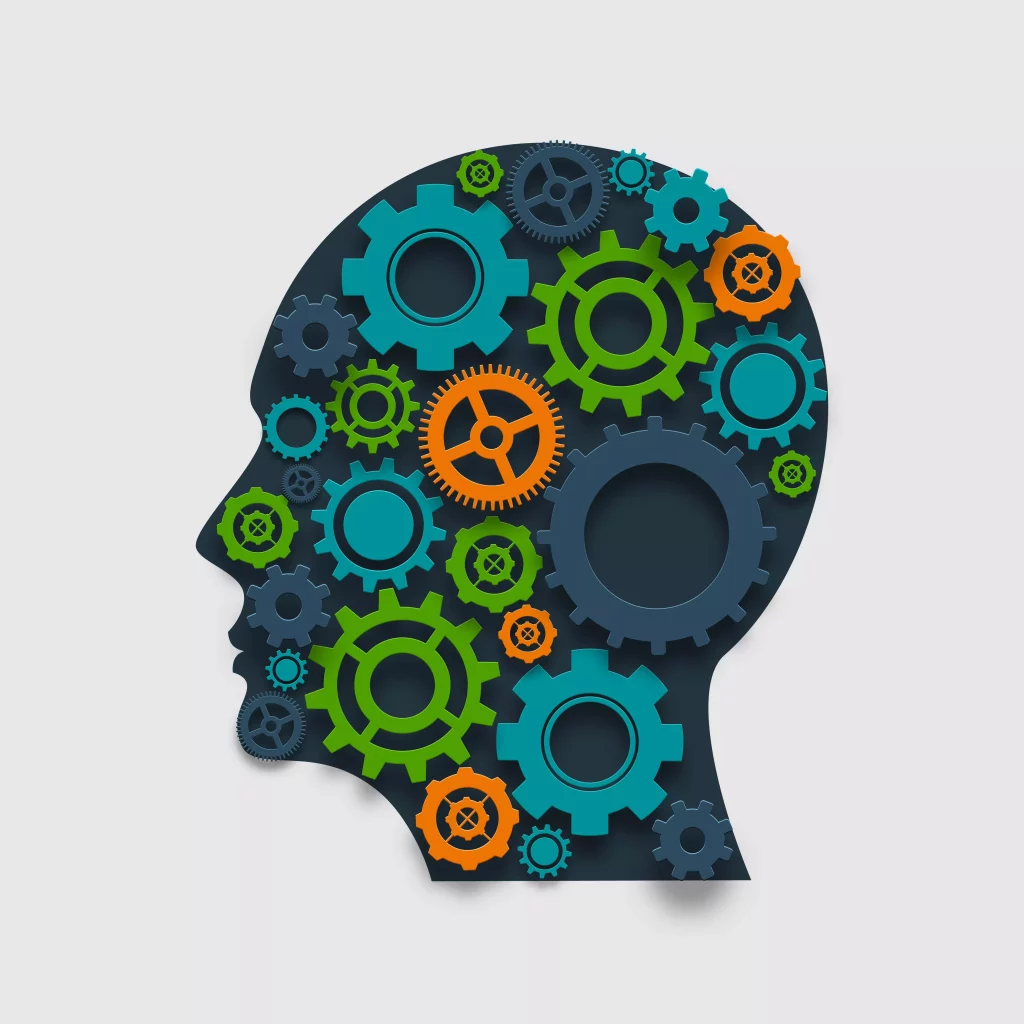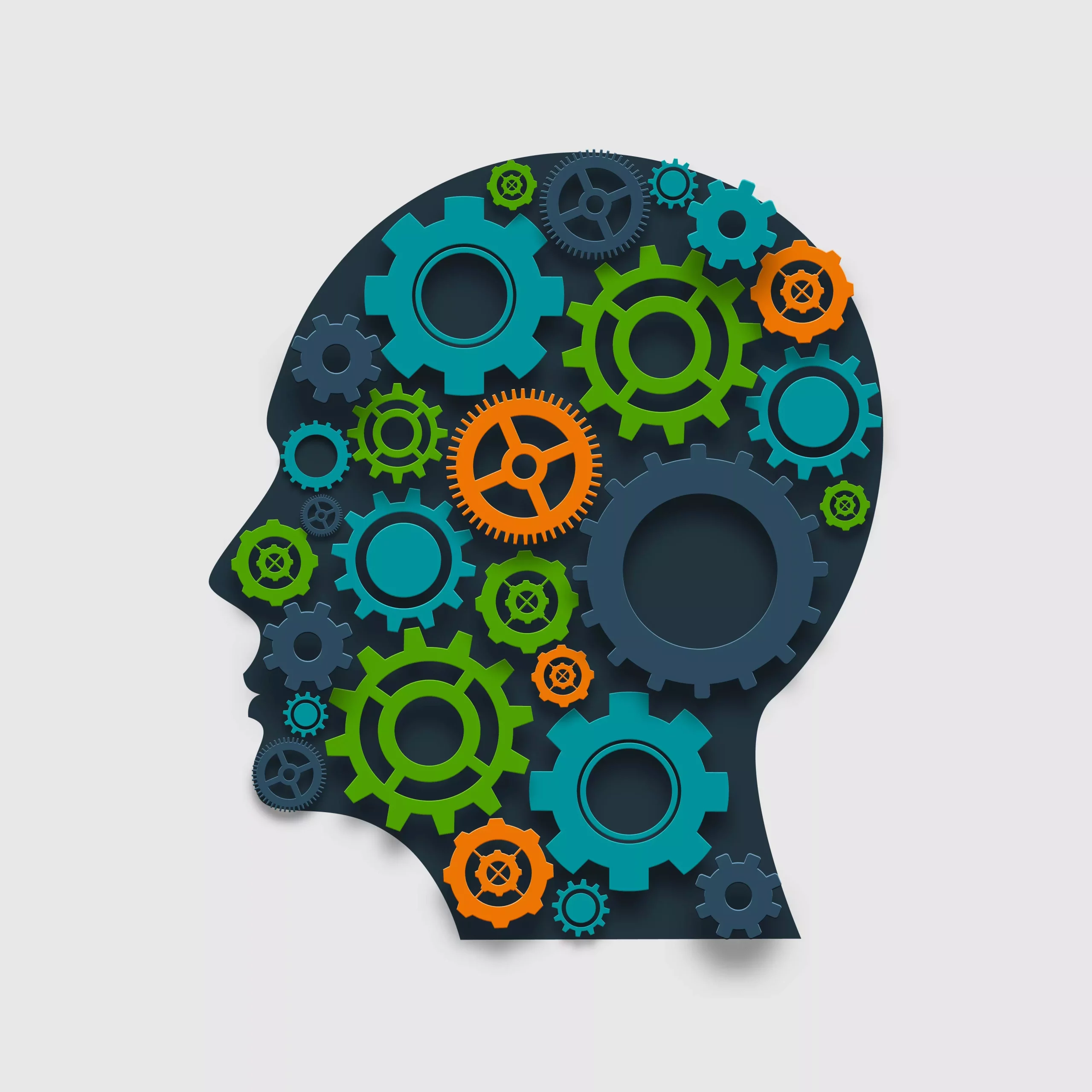Let’s learn about Artificial Neural Networks.
Common computer programs are stupid. It works as programmed. Can’t do anything on its own. Some scientists thought that if computers could learn the way humans learn, then computer programs could become smarter. You can learn by yourself. Can work based on learning. The artificial neural network branch was created from the effort to create computer programs in the way that people learn and work. Learn about Artificial Neural Networks.
Artificial neural networks are derived from mimicking the neural networks of the human nervous system. Neural networks help make computers smarter, the way the human brain works. The human brain is very complicated. Researchers are still trying to figure out how the entire system works. What we do know is that the smallest cells in the brain are neurons. These neurons hold our memories. by thinking The human brain consists of more than 100 billion nerve cells or neurons. Human or animal neurons are connected to each other by axons.
Artificial Neural Network is a combination of many nodes. which are made to mimic human or animal neurons. This one node is connected to another node by links. Through these links, one node communicates with another node. Nodes can perform simple operations on any input. Then transfer to the next node. The output that a node transfer is called a node value.
One link carries one weight. Artificial neural networks can learn by themselves. Link weight changes based on learning.
There are two types of artificial neural networks.
Feedforward ANN
Feedback ANN
Information flow is unidirectional in feed-forward artificial neural networks. In a feedback artificial neural network, the flow of information can be in all directions, arriving at the back node. Can be a loop.
Artificial neural networks are used in machine learning. ANN can learn by itself. The link weights of the nodes can be changed by learning. Slowly ANN can work precisely. Artificial neural networks have many uses. Machine learning is now unimaginable without artificial neural networks. ANN is also used to detect whose photo is uploaded to Facebook. It is possible to create many advanced systems using ANN in many fields including image classification, natural language processing, aerospace, self-driving cars, medicine, and finance.
No-code app development
No matter what is called low-code/no-code, no app development is possible without code. Apparently there is no code but actually coding is a big part of no-code app too.
The only difference is that you don’t have to write these codes yourself or your developers. These are some pre-written codes that you customize to create your app.
The entire no-code/low-code platform relies on a programming language like Java.
However, no-code app development does not require the user to know any programming language. But, for low-code app development and maintenance, the user needs to have at least a beginner level understanding of the programming language.
The tools that are used to create these No-code apps, some apps are already coded in the form of templates. For example – eCommerce, Educational, Magazine, etc. From there you can choose the design with the feature set that suits you and tweak it to your liking.
Advantages of no-code app development
Saves time
One of the major advantages of low-code app development is that the entire process can be completed in much less time. If it’s a simple app, it might be possible to build a complete app with workflow in a day.
Easy to edit
Since you don’t need to use any programming language to create low-code apps, there is no chance of coding mistakes. Also, you don’t have to write new code if you want to change a feature of the app or a step in the workflow. So, you can edit the app very quickly and easily.
affordable
No-code app development can be completed for much less than the tools and money you would need to build a professional-level app with a developer.
Disadvantages of no-code app development
Limited customization
In No-Code apps, the scope of app customization is very limited. If the app is a core part of your organization’s business model, the functionality of the app will need to change as your business thrives. But, it is not possible to do that in No-code app. The scalability of No-Code apps is negligible.
It is not possible to develop large scale apps like Uber, AirBNB using No-Code.
API
You cannot create your own API. In effect, your app will become much more limited.
Limited features
No-code apps have a lot of feature combinations, but very advanced features are hard to come by. Again, after creating your app, you will code a feature with the help of your own developer, excluding the No-code platform, that opportunity is not available in many cases.
Or, even if the feature you want is available, it may turn out to be so expensive that it would have cost you less overall to code the app from scratch.
Specific platform-centric
The main objective of the platform is client retention. The prerequisite for using such platforms is that these apps will run in a specific Cloud Based environment. So you can’t modify the app using any other platform or coding language. That is, your app will be locked-in to that particular app development framework.
Have to spend again and again
Most app development platforms charge a monthly or yearly rate that you have to pay for life. It is a recurring cost that you have to bear year after year.
Compared to that, native app development costs more initially but costs much less to maintain the app later.
Scalability is low
No Code app is not scalable. While good to start with, after a certain number of users it becomes difficult to scale and maintain adequately.
Limitations of traditional AI
Traditional AI was based on rationalism, that is, analyzing the work of each intellect and trying to understand how computers could be given this power. Although it solves some simple problems in all cases, many real problems remain out of reach. But a little observation reveals that our actions are often controlled from the subconscious without our knowledge. We never sit down to think about the surroundings, understanding or recognizing, speaking and listening. Traditional AI would require a cyclical control system of feel-feel-action to express intelligence in machine activity. The sense is to store the stream of information coming from multiple sensors useful for the job. Sense means analyzing this data to make an idea about the environment, or to create a model of the environment. Based on this model, what the machine should do is determined through logic, reasoning and exploration, according to the goal.
Continuous computers follow this control cycle, so that the machine can adapt to any sudden changes in the environment. Although this control cycle seems quite logical to our common sense, it contains a concept called ‘basic logic of intelligence’. An alternative to this is the formation of the intellect, a direct control cycle from feeling to action. There is no point in arguing. Acting largely subconsciously based on gut feeling. Artificial neural network (artificial neural network) is proposed for this purpose, i.e. artificial neural network, ANN for short.
The birth of neural networks
Its conception began in the 1940s, when there was no clear idea of what a computer would look like. Its main component was the ability to learn from example. The type of neuron considered at this time had a linear relationship between input and output, so its capacity was limited. In the 1970s, Marvin Minsky, in a book called ‘Perceptron’, analyzed it in detail [1] and concluded that neural networks can never learn a difficult task. As a result, research on the subject almost stopped for several years. Then in the late 1980s, Rumelhart and others showed how to teach him to act by creating a network of nonlinear (non-linear) neurons [2]. Its successful application is in many cases. After that, there was a renewed interest in ANN. An artificial neuron is a very simple machine that calculates an output from its inputs only according to a certain formula. The picture below shows a picture of a nervous system made up of these types of neurons.

The formula by which output is calculated may vary. But it is certainly not linear, that is, if the input changes slightly, the output does not change proportionally. A neuron can take input from many other neurons simultaneously, and its output can be fed to the inputs of many other neurons. On the path from the output of one neuron to the input of another neuron there is a control weight (weight) that determines how much the first neuron will contribute to the activation of the second neuron. Neurons can be connected to each other in different ways. A connection’s load determines how active it will be. Teaching a neural net means adjusting the values of its connection weights, so that they follow the taught behavior.
Input, output and hidden layers
Different types of neural nets can be constructed depending on the type of interconnections. A neural net that will be specifically discussed here has neurons arranged in layers from input to output. Neurons in the input layer receive the problem description. The problem is solved by neurons in the output layer. For example, if the objective is to recognize handwritten numbers, the input to the input layer neurons will be the luminance of each point in a handwritten number image. Similarly, one neuron in the output layer can be considered as representing a number. That is, the output neuron with the highest activation will be treated as the input image of the number. How many neurons should be in the input and output layers depends on the nature of the problem. If the number image is described by a square 10 x 10 point luminance, then 100 neurons are required in the input layer. Since the output can only be the ten numbers 0 to 9, only 10 neurons are needed in the output layer.
Artificial Intelligence Markup Language – AIML
That is the story of input and output level. Between them there is one or more secret neuron layer or hidden layer (hidden layer). The input of each neuron in the first hidden layer comes from the output of each neuron in the input layer, according to their connection weights. Similarly, the output of each neuron in the hidden layer is fed to the input of each neuron in the next hidden layer (or if there is only one hidden layer, its output is fed to the input of each neuron in the output layer). Each neuron in each layer combines all the messages received in its input and computes on them to generate the output message [2]. Thus the solution is finally published at the output level.
Naturally, this solution depends on the current value of the interconnection weights of the neurons. All loads need to have suitable values to make the solution work. Rumelhart and his colleagues developed a backpropagation algorithm to determine the values of these weights from many examples. However, this does not happen all at once. By repeatedly running many instances, the network gradually builds up the load values of all its connections. The purpose of this algorithm is to reduce the error based on the number of errors in the solution in each instance, based on the connection weight of each posterior layer. Although simple, this algorithm has proven to be very effective. Its use still continues, although the field has changed a lot.
